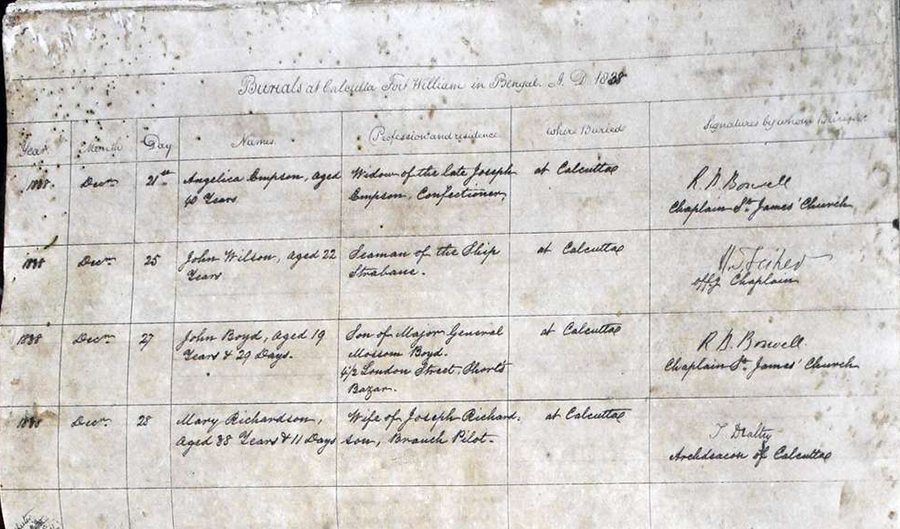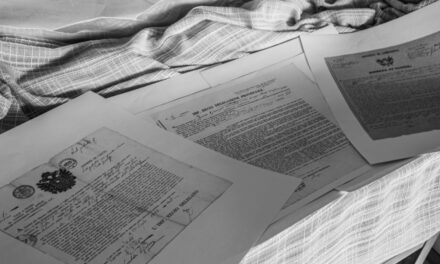Tracing one’s ancestry is a fascinating and rewarding journey that offers insights into our family’s history and connections. Church records play a pivotal role in genealogy research, as they document important life events such as baptisms, marriages, and deaths, providing a wealth of information about our ancestors. These records can help bridge gaps in our family tree and offer a more comprehensive understanding of our heritage.
The objective of this article is to provide a step-by-step guide for readers on how to use church records effectively for genealogy research. We will delve into various aspects of working with these records, including understanding their significance, identifying relevant documents, accessing and organizing records, and analyzing the information. We will also explore how to complement church records with other resources, address common challenges, and discuss ethical considerations in genealogy research. By following this guide, you can embark on a fulfilling journey to uncover your family’s history and forge a deeper connection with your roots.
Table of Contents
Understanding Church Records
Church records, also known as parish records or ecclesiastical records, are documents created and maintained by churches to record various religious events and ceremonies within their congregations. These records hold immense significance for genealogy research, as they can provide valuable insights into the lives of our ancestors, including their relationships, occupations, and places of residence. Additionally, church records often predate government-maintained records, such as civil registrations and census records, making them an indispensable resource for tracing ancestry further back in time.
There are several types of church records available for genealogy research, with the most common ones being baptism, marriage, and death records. Each type of record serves a unique purpose and provides different information about our ancestors:
- Baptism Records: These records document the baptism of an individual, usually as an infant, and typically contain information such as the child’s name, birth date, baptism date, parents’ names, and godparents’ names. In some cases, baptism records may also include the parents’ occupations and place of residence. Baptism records can help establish family connections and provide important clues about an individual’s place and date of birth.
- Marriage Records: Marriage records document the union of two individuals and often contain the information such as the names of the bride and groom, their ages, occupations, residences, marriage date, and names of witnesses. In some instances, marriage records may also include information about the parents of the bride and groom. These records are crucial in establishing relationships between families and can help identify the movement of individuals or families over time.
- Death Records: Death records document the passing of an individual and usually include information such as the deceased’s name, age, occupation, cause of death, date of death, and place of burial. In some cases, death records may also provide information about the deceased’s spouse, parents, or children. These records can help establish family connections, provide insight into an individual’s lifespan, and trace the family’s history of residence.
In addition to these primary types of records, church records may also include other documents such as confirmation records, membership rolls, and minutes from church meetings. The information contained in these records can provide a rich and detailed picture of our ancestors’ lives, helping us to better understand their experiences and connections. By carefully examining and analyzing church records, we can uncover invaluable clues and insights that aid in tracing our ancestry and enriching our understanding of our family’s history.
Identifying Relevant Church Records
The process of tracing your ancestry through church records requires identifying the relevant records that can provide valuable information about your ancestors. Focusing on pertinent records streamlines your research, saving time and effort. In order to effectively trace your family history, it is crucial to narrow down your search to the records that have the highest potential of containing information about your ancestors.
There are several factors to consider while identifying relevant records for your genealogy research:
- Location: The geographical location where your ancestors lived plays a significant role in determining which church records to focus on. You may need to conduct preliminary research to determine the specific towns, parishes, or cities where your ancestors resided. This information will help you concentrate your efforts on the records maintained by churches in those areas.
- Religion: Since churches often maintain separate records, it is important to identify the religious denomination of your ancestors. Different religious denominations might have different practices regarding record-keeping. Familiarize yourself with the specific customs and practices of the denomination to which your ancestors belonged, as this will help you know what kind of records to expect.
- Time Period: Establish the time period during which your ancestors lived to narrow down the records you need to consult. Church records can span centuries, and focusing on the relevant time period ensures that your research is efficient and targeted.
Once you have identified the relevant factors, the next step is to find and access the church records. There are several avenues through which you can access these records:
- Online Databases: Many church records have been digitized and are available through online databases. Some popular databases include FamilySearch, Ancestry.com, and Findmypast. These databases often offer search filters that allow you to focus on specific locations, time periods, and record types.
- Archives and Local Libraries: Church records that have not been digitized may be available in physical format at local or national archives, libraries, or genealogy societies. Contact these institutions to inquire about the availability of the records you seek, and visit them in person if necessary.
- Contacting Churches Directly: In some cases, the records you seek may still be held by the churches themselves. Contact the church or parish office to inquire about the availability of their records and the process for accessing them. Keep in mind that some churches may have strict policies regarding access to their records, or may charge a fee for providing copies of the documents.
By considering the relevant factors and utilizing the various resources available, you can identify and access the church records that hold the key to unlocking your family’s history.
Organizing and Analyzing Church Records
Organizing and analyzing church records is a vital part of your genealogy research. Efficient organization of records enables you to easily locate and reference information as you progress in your research, while thorough analysis of records helps uncover valuable insights and connections between family members. Developing a system for organizing and analyzing records will greatly improve the efficiency and accuracy of your genealogy research.
Tips for organizing records:
- Digital Filing Systems: If you are working with digital records, create a structured folder system on your computer or cloud storage service. Organize folders by record type (e.g., baptism, marriage, death), then further subdivide by location, time period, or family name. Consistently name your files with a clear, informative format, such as “Surname-FirstName-RecordType-Year.”
- Physical Folders: For physical records, invest in a file cabinet or storage box and use labeled folders or binders to separate records by type, location, or family name. Store records in acid-free plastic sleeves to protect them from damage.
- Spreadsheets: Create spreadsheets to log information extracted from records, such as names, dates, locations, and record types. You can use spreadsheet software like Microsoft Excel or Google Sheets, and create separate sheets for different record types or family branches. This will allow you to quickly reference and sort information as needed.
Strategies for analyzing records:
- Cross-Referencing: Compare information from different records to confirm or clarify details about your ancestors. Cross-referencing can help you identify relationships between family members, verify dates, and uncover additional information about your ancestors’ lives.
- Noting Inconsistencies: As you analyze records, take note of any inconsistencies or discrepancies in the information you find. These inconsistencies may reveal errors in the records, or they may indicate that you are researching individuals with similar names or other identifying information. Investigating these inconsistencies can help you resolve ambiguities and strengthen your genealogy research.
- Following Leads: When analyzing records, keep an eye out for leads that can point you to new avenues of research. This could include the names of witnesses on a marriage record, the names of godparents on a baptism record, or the location of a burial site on a death record. Pursuing these leads can help you uncover additional information about your ancestors and extend your family tree.
By developing a robust system for organizing and analyzing church records, you can enhance the quality and efficiency of your genealogy research. This will enable you to uncover valuable insights about your ancestry and construct a rich, accurate portrait of your family’s history.
Case Study: Tracing Ancestry Using Church Records
In this case study, we follow the genealogy journey of Jane, a history enthusiast who decided to trace her ancestry using church records. Her goal was to learn more about her great-great-grandparents and their lives in the late 19th and early 20th centuries.
Step 1: Identifying Relevant Records
Jane began by gathering information about her great-great-grandparents, such as their names, approximate birth years, and the town where they lived. She learned that they were members of the local Presbyterian church. Armed with this information, Jane focused her research on the church records from that town and time period.
Step 2: Accessing Church Records
Jane searched online databases, such as FamilySearch and Ancestry.com, to find digitized records from the local Presbyterian church. She also contacted the town’s historical society, which provided her with additional records that were not available online.
Step 3: Organizing and Analyzing Records
Jane created a digital filing system to organize the records she found and used spreadsheets to log the information extracted from them. Through careful analysis, she discovered her great-great-grandparents’ marriage record, which revealed their parents’ names and the witnesses who attended the wedding.
Challenges and Discoveries
One challenge Jane faced was the inconsistency in her great-great-grandmother’s maiden name. By cross-referencing various records, she determined that a clerical error had been made in one of the documents. Jane also discovered that her great-great-grandfather had a brother she had not known about, thanks to a baptism record listing the same parents.
Key Takeaways:
This case study demonstrates the effectiveness of using church records in genealogy research. By identifying relevant records, accessing them through online databases and local resources, and organizing and analyzing the information, Jane was able to uncover previously unknown details about her great-great-grandparents and their family. Her experience underscores the importance of persistence and a methodical approach when researching ancestry through church records.
Troubleshooting Common Challenges
Tracing ancestry through church records can present various challenges. However, with persistence and creative problem-solving, these obstacles can often be overcome. Below, we discuss some common challenges and offer practical solutions to help you navigate these difficulties in your genealogy research.
- Illegible Handwriting: Older church records may feature handwriting that is difficult to decipher due to age, fading, or unfamiliar script styles. To overcome this challenge, try to familiarize yourself with the script used in the records by studying handwriting guides or transcribed examples. If you’re still struggling, consider seeking assistance from fellow genealogists or online forums dedicated to deciphering old handwriting.
- Language Barriers: Church records may be written in a language different from your own, posing challenges in understanding the content. To tackle this obstacle, use translation tools, such as Google Translate, or reference guides for genealogy-specific terms in the language of the records. Alternatively, you can seek help from native speakers or professional translators who specialize in historical documents.
- Missing or Damaged Records: Some church records may be missing or damaged due to natural disasters, human error, or the passage of time. If you encounter this issue, explore alternative sources that may contain similar information, such as civil registrations, newspapers, or family letters. You can also try contacting other churches in the area, as they may have duplicate records or hold records for individuals who changed congregations.
- Privacy Restrictions: Some church records may have privacy restrictions in place to protect sensitive information about living individuals. To access these records, you may need to prove your relationship to the individuals in question or obtain permission from the record holders. Be prepared to provide documentation to support your request and respect the privacy policies in place.
By employing these strategies and remaining persistent in your research, you can successfully navigate the challenges posed by church records and continue to uncover valuable information about your ancestry.
Complementing Your Research with Other Resources
While church records are invaluable for tracing ancestry, it is essential to use additional resources to complement and validate the information you find. Incorporating multiple sources not only helps to confirm facts but can also provide a more comprehensive understanding of your ancestors’ lives and the historical context in which they lived.
Examples of complementary resources include:
- Census Records: Census records can provide valuable information about your ancestors’ household composition, occupations, and places of residence. Comparing this data with church records can help you verify family relationships and track the movement of your ancestors over time.
- Newspapers: Newspapers can offer insights into your ancestors’ lives through obituaries, marriage announcements, and local news stories. These resources can provide additional context and help you discover information not recorded in church documents.
- Land Records: Land records can reveal information about your ancestors’ property ownership, economic status, and geographical location. This information can help you confirm details found in church records and provide insight into your family’s financial history.
- Military Records: Military records can offer information about your ancestors’ service, including their rank, unit, and dates of service. These records can help you understand your family’s involvement in historical events and the impact of military service on their lives.
To effectively combine information from multiple sources, maintain an organized research system, and cross-reference the data to confirm facts and resolve inconsistencies. By incorporating various resources into your genealogy research, you can paint a more accurate and detailed picture of your family’s history.
Ethical Considerations in Genealogy Research
Genealogy research often involves delving into the personal lives of our ancestors and sometimes uncovering sensitive information. It is crucial to approach your research responsibly and thoughtfully, keeping ethical considerations in mind. Respect the privacy of living relatives and individuals mentioned in the records by seeking permission before sharing their personal information. When handling sensitive data, such as adoption records or family secrets, exercise discretion and consider the potential impact on those involved. As a genealogy researcher, strive to maintain a balance between uncovering your family’s history and preserving the dignity and privacy of those whose lives you explore.
Conclusion
In this blog post, we explored the significance of church records in tracing one’s ancestry and discussed various aspects of utilizing these records, such as identifying relevant documents, accessing and organizing records, and analyzing the information. We also highlighted the importance of complementing church records with other resources, addressing common challenges, and maintaining ethical considerations in genealogy research. Church records are an invaluable tool for uncovering your family’s history and connections. By following the strategies and tips outlined here, you can embark on a rewarding genealogy journey, enriching your understanding of your ancestors and their lives.




